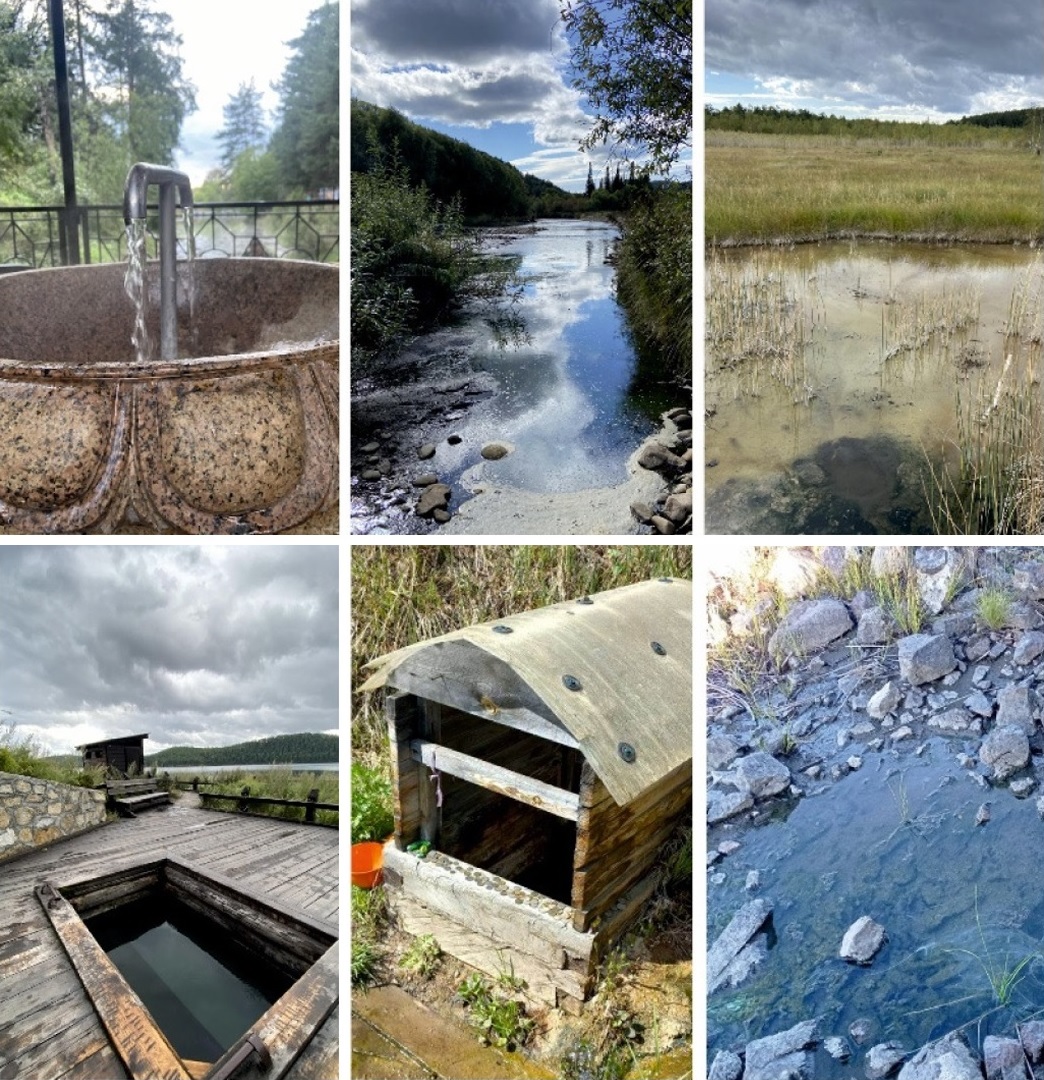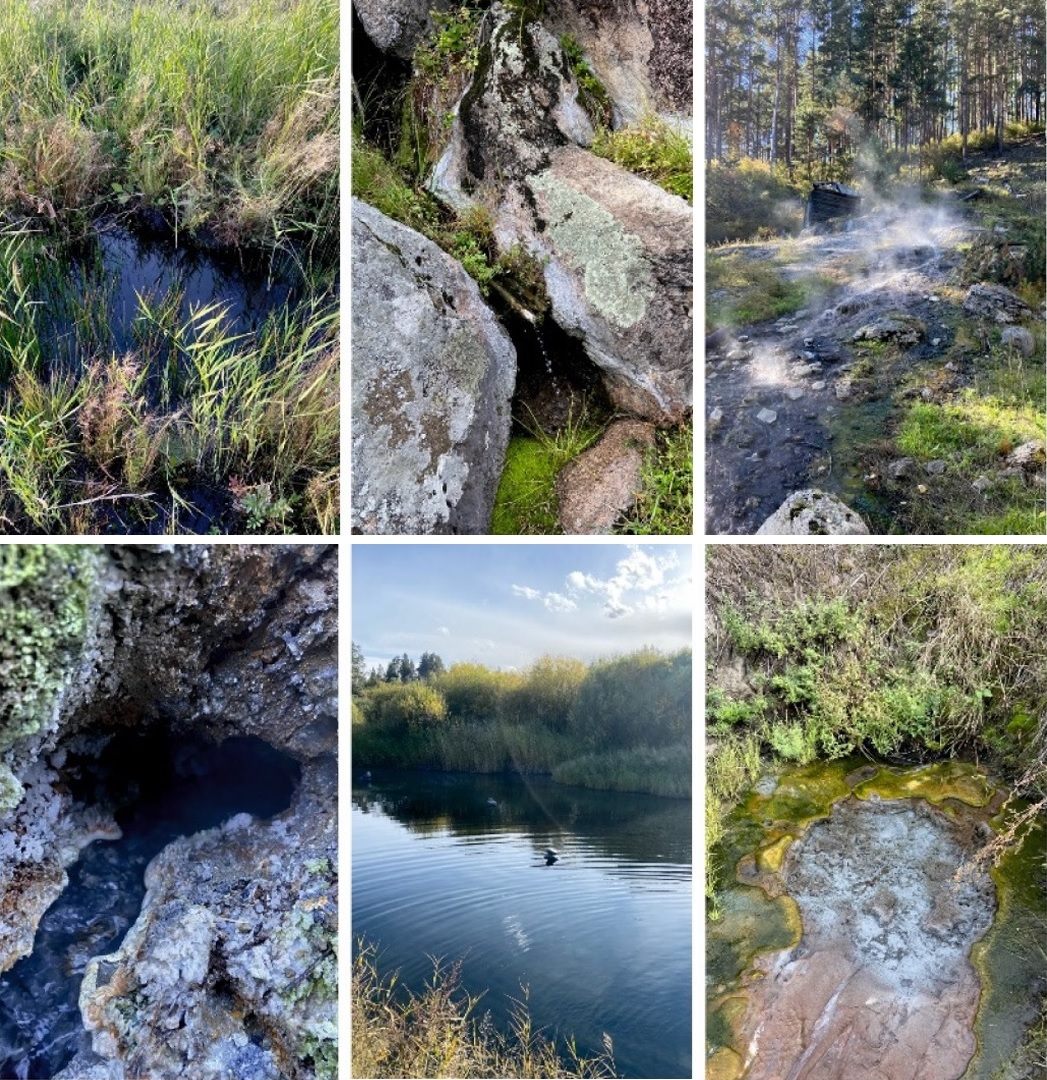The research is conducted in collaborative efforts of scientist from the Tomsk Branch of the Trofimuk Institute of Petroleum Geology and Geophysics SB RAS, Dobretsov Geological Institute (GIN SB RAS, Ulan-Ude), Institute of Natural Resources, Ecology and Cryology SB RAS (Chita) and Institute for Complex Analysis of Regional Problems FEB RAS (Birobidzhan).
The Baikal rift zone (BRZ) is one of the most perspective objects in the Asian part of Russia for the investigation of geochemical and origin issues in a hydrothermal field. This area began to form in the Paleogene (from 66 Ma to 23 Ma) and its evolution still continues.
The Baikal rift zone is featured by Cenozoic volcanism, significant geophysical and temperature anomalies, high seismicity, the presence of deep faults and other evidence of recent tectonic activity. BRZ is one of the largest rift structures encompassing the Lake Baikal depression and extending from northwestern Mongolia as far as southern Yakutia.

Thermal springs in the central part of the Baikal rift zone
Thermal waters widely occurring in the central portion of the Baikal rift zone play a significant part in the tourism industry of the Republic of Buryatia, and in themselves represent a great asset for the regional economy and health sector, as well as for geological research. Thermal waters are widely used in balneology (which involves both specialized resorts and “wild’, untended springs), and for medical treatment and rehabilitation due to the healing action of dissolved mineral salts.
As specialists say, mixing thermal waters with cold ground or surface waters may decrease the balneological effect of thermal springs. To this end, researchers have embarked on a large interdisciplinary project aimed at investigating the mechanisms and processes of thermal water formation in Transbaikalia based on an integrated approach, in order to study both thermal and cold groundwaters and the host rocks.
The project participants sampled waters from thermal springs in the central part of the Baikal rift zone located in the Republic of Buryatia. A total of 15 springs have been tested in the area of Kurumkan, Arzgun, Argada and Ust-Barguzin settlements.

Thermal springs in the central part of the Baikal rift zone
Scientists have studied geological conditions, and supplemented the results with measurements of temperature, acidity (pH), and with determinations of chemical type and gas composition of thermal waters. Likewise, the geochemical features of the thermal waters were identified, the calculated and measured temperatures were correlated and some other analytical measurement procedures were carried out.
According to researchers, the obtained results will have to be correlated with additional data on the composition of primary and secondary minerals of the host rock. At this, thermodynamic and physicochemical calculations based on the actual information on the composition of the rock, and additional information on the isotopic composition also need be taken into consideration. This will be the focus of further research.
RNSF project No. 24-77-10035 is scheduled until 2027. The project coordinator is Elena Zippa, PhD (geol.-mineral.), senior research scientist of the Hydrogeochemistry and Geoecology Laboratory (Tomsk Branch, IPGG SB RAS) headed by Olesya Lepokurova, D Sc (geol.-mineral.)
Published by IPGG Press Service
Photos courtesy of the researchers
For your reference
For more details, please, see the published research results in the article by Zippa E.V., Ukraintsev A.V., Chernyavskii M.K., Fedorov I.A., Poturay V.A., Domrocheva E.V., Mukhortina N.A. – Thermal waters in the central part of Baikal Rift Zone: Hydrogeochemistry and geothermometry (Republic of Buryatia, Russia) // Geothermics – vol. 130 – 2025